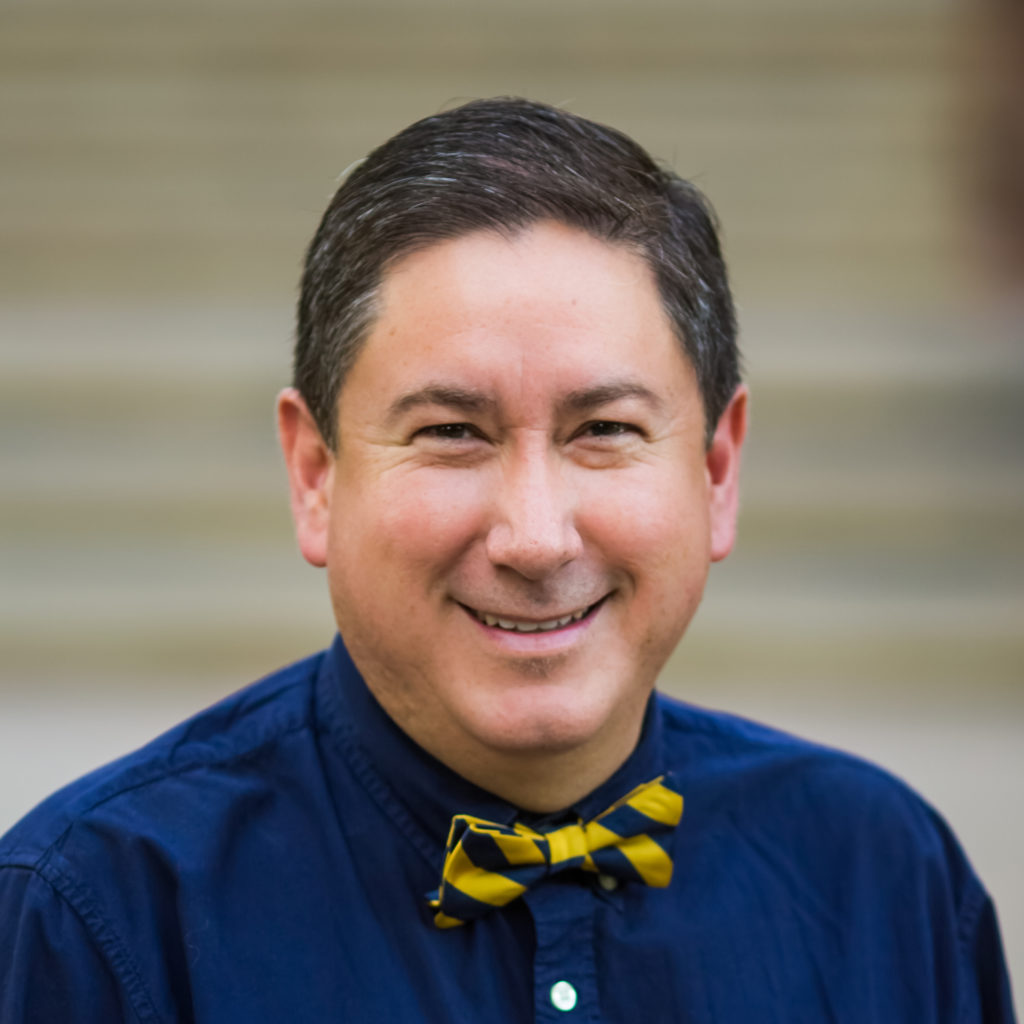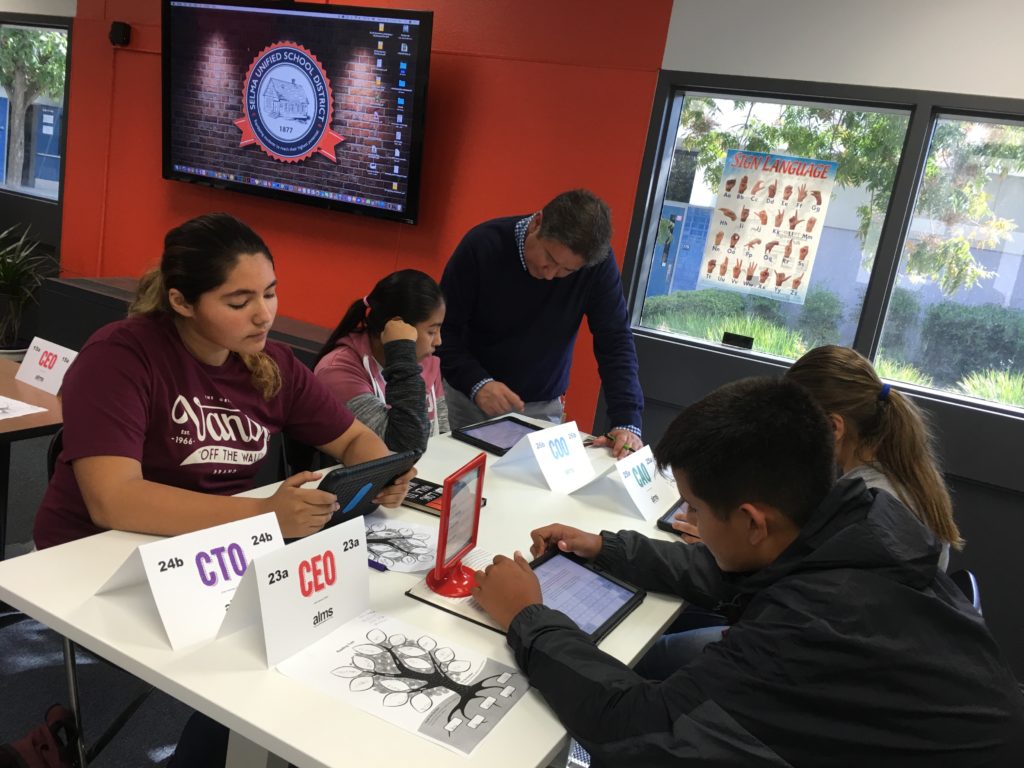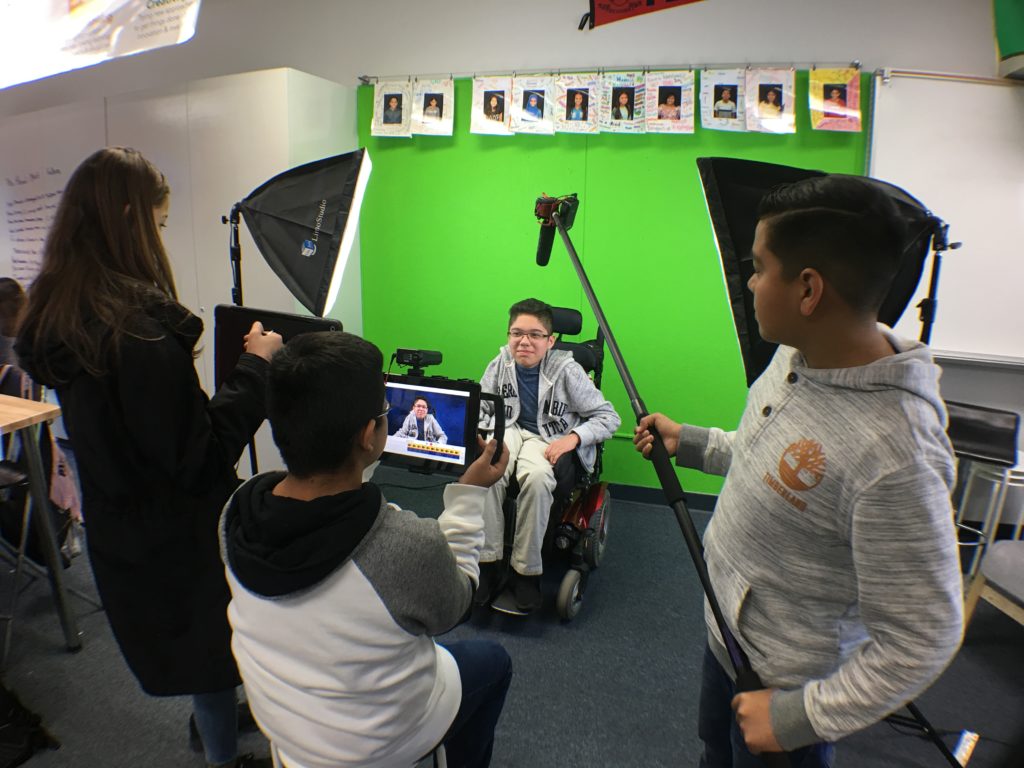Everyone has a story. Educator Efrain Tovar’s begins as a
Spanish-speaking child living in the Central Valley, at a time when supporting
diverse language learners meant sitting non-English-speaking students in a
small room with headphones to listen to conversational English on tape. Tovar’s
experiences seem so far away yet highly relevant as he leads a discussion with
his 14 Newcomer students, with subtitles of his words in seven languages
streaming behind him on a screen as he talks.
“Those experiences I encountered as an English language
learner made me the teacher I am today,” Tovar says, noting that the insight
reminds him to listen to his students. “Every Newcomer has a story. And if you
know their story, it gives you a glimpse of who they are.”

Tovar teaches the Newcomers program at Abraham Lincoln Middle
School in the rural farming community of Selma, once known as the “Raisin
Capital of the World.” Students who are called Newcomers have moved to the
United States within the last three years, often as refugees from difficult
situations and nearly always without a strong grasp of English. In this school,
nestled up against vast fields of grapevines, Tovar has created a supportive
learning community where he teaches his students critical thinking skills and
how to be proud of their unique voices at the same time as the basics of a
subject and predicate.
“Yes, we have data on every student, but we need to know
their story. How do we become sensitive to their stories?” asks Tovar, a member
of Selma Unified Teachers Association. “How do you connect with them to get
them to feel, ‘Wow, I’m OK where I am’? It’s about connecting with students.”
Telling stories
While Tovar’s personal journey to Selma and his inspiring
commitment to students newly arrived in this country are noteworthy enough,
there’s another unique facet to his story that traces back to the first time he
played Oregon Trail on an Apple computer as a sixth grader. Efrain Tovar is an
education technology innovator (likely the only Google-certified Newcomer
educator in the state!), utilizing technology to help his Newcomer students
achieve far more than just learning English.
In 2016, he was one of two educators worldwide to
participate in the Google Innovator Program, which challenged 1,600 bright
minds to come up with an idea that would radically change education. Tovar’s
project: How to use technology to help students acquire a secondary or even
tertiary language. With as many as seven languages in his classroom — from
Spanish and Punjabi to Arabic and Zapotec, an indigenous language of Mexico —
Tovar had to figure out how to best help his students when he couldn’t speak their
native tongue. A big part of it is creating a safe environment where his
students feel valued and comfortable — a place where failure is embraced.

“We applaud failure because we need to learn it’s a process
— that we make mistakes and that’s how we learn anything,” he says. “How can we
leverage technology to help our English learners to be critical learners, and
how can we leverage their primary language to promote multiple literacy?”
One way is to teach them a third language while they learn
English, but not in the traditional sense. All of Tovar’s students are also in
his computer science class, where he’s teaching them the basics of programming.
Since his students are already learning foundational acquisition skills for
English, Tovar says, their minds are primed to learn how to write code and
develop their own creations in this new language. Last year, one of his
students developed a successful math study app shortly after arriving from
war-torn Yemen and while she awaited members of her family to join her safely
in the United States. The achievement is a testament to Tovar’s philosophy.
“Under the right circumstances and with the right support,
students can learn anything,” Tovar says.
Part of that support is training and professional
development for educators, so they have the best tools to help students
succeed. Tovar trains fellow educators on the use of technology with English
language learners, as a presenter at CTA’s Good Teaching Conference and in his
role as a Lead Learner with CUE (Computer-Using Educators), the well-known
organization that supports and connects innovative, tech-savvy educators.
Seeing a need for more networking and fluid information sharing among his peers
in English language development (ELD), Tovar founded California ELL Chat on
Twitter (@CaELLChat), which has blossomed into a digital community that
connects ELD educators to share tips, inspire one another, and develop skills
to best serve diverse language learners.
“How are we innovating ourselves as educators?” Tovar asks.
“And how are we innovating our approaches to teaching?”
The language of caring
This applies to everything from how technology is being
utilized in the classroom to the way the learning environment flows. Tovar’s
classroom feels like a Silicon Valley idea farm, with stools at rectangular
high tables, no discernible front to the room, and walls and surfaces that are
all dry-erase writable. His students work in teams, with each assigned a role
like Chief Operations Officer or Chief Technology Officer, learning together
about each other’s stories as they continue writing their own.

“As an educator, have your classroom be a reflection of what
is coming and what is already here,” Tovar says. “Your classroom will transform
the way you teach.”
Being deliberate is a big part of Tovar’s recipe for
success. Showing his students that they have a great deal to teach him and
others is one of those deliberate lessons on display in an annual event
celebrating the promotion of Tovar’s Newcomer students. In front of hundreds of
assembled family, school and community members, Tovar introduces each student
in their primary tongue — an act that means so much more than learning some
phrases in another language.
“I’ll speak in Arabic, Punjabi, in Zapotec,” he says. “It
means so much to the students and their families — to elevate their language as
an equal to English.”
Tovar is eager to share lessons and best practices from his
work with Newcomers in Selma Unified. Since recruiting him to teach the program
in 2013, the school district has been completely supportive of his work and
desire to help other educators as well, he says. Tovar led a session with
elementary teachers in San Gabriel Valley last summer on how to leverage
technology in an ELD/Newcomer classroom, and he’s currently working on an
e-book outlining best practices. And as much as he likes to share his own
story, he always wants to hear the stories of others.
“All teachers should share their stories!” he says. “Tell
your story and create your own hashtag so others can see the great things you
are doing every day!”
Join the Conversation
Follow Efrain Tovar on Twitter at @efraintovarjr and California ELL Chat at @CaELLChat.
The Discussion 0 comments Post a Comment